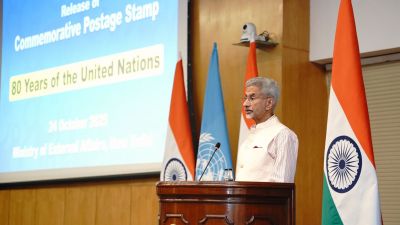Lanka offers free access to Trincomalee, India mulls over it
NEW DELHI, MAY 11: In what constitutes a move of enormous strategic significance, Sri Lanka is believed to have offered India free access ...

NEW DELHI, MAY 11: In what constitutes a move of enormous strategic significance, Sri Lanka is believed to have offered India free access to the port of Trincomalee, one of the best, natural deep-sea harbours in the world.
The offer was made to New Delhi about a month ago and comes with no strings attached. The Government is said to be still evaluating the implications of the proposal, especially in the light of the current conflict between Colombo and the LTTE in northern Sri Lanka, and has so far not come up with a decision.
Highly-placed sources here said that the offer of the Trincomalee port in Sri Lanka’s eastern province indicates that Colombo has finally come around to accepting New Delhi’s role as a power in the region. The sources pointed out that Colombo did not want “any reciprocity” from India for the use of Trincomalee’s facilities.
According to the sources, the significance of the proposal lay in the fact that the Indian Navy would be given full authority to decide which foreign warship or vessel was allowed to enter the harbour. That, in effect, the Navy would have the run of this part of the Indian Ocean.
Clearly, though, New Delhi’s hesitation in grabbing the month-old offer indicates that it is not fully convinced about its ramifications. It certainly doesn’t want to take control of Trincomalee, only to get further sucked into a conflict from which it has once been badly burnt.
Analysts here said that with the LTTE determinedly continuing its military offensive against the Sri Lankan armed forces — according to reports, it is within reach of Jaffna town — Colombo’s “very attractive offer” was meant as a bait to increase India’s stakes in the ethnic conflict in that island.
For the moment, India’s naval needs seem serviced by its own ports, and according to one school of thought, control of Trincomalee will not serve additional practical purpose.
On the other hand, New Delhi clearly doesn’t want any other foreign power, such as the US, to establish a presence within breathing distance of India’s coastline. Trincomalee is a mere 16 km away from Indian territory and some 40 minutes by air from Chennai.
The Indian quandary is further complicated by its awareness of the geo-strategic importance of Trincomalee. Which is why in the exchange of letters that accompanied the Indo-Sri Lankan accord of 1987, one of the key clauses stated that the port must not be controlled by any foreign power inimical to India, a euphemism for the US.
The US had then wanted to take over and develop the Trincomalee oil tank farm, very close to the port, which New Delhi felt was a mere cover for its interest in the port itself.
In fact, Sri Lanka’s former president J R Jayewardene, had flirted with the idea of inviting Washington to establish a presence in Sri Lanka in the early 1980s, at the time Indira Gandhi’s government was training LTTE guerrillas in India. Colombo then signed an agreement with the US Navy to provide “rest and recreation” facilities at Trincomalee, a move that sent alarm bells ringing all over New Delhi.
Cleverly, however, Jayewardene later withdrew from that agreement, and in 1987 signed the accord with India, giving in to New Delhi’s own conditions. In turn, the Indian Peace Keeping Force was sent in to keep the peace between the LTTE and the Sinhala-majority government.
Certainly, with the searing IPKF experience uppermost in its mind, New Delhi is keen to learn from history. Besides the fact that the Government is likely to seek further clarifications about the proposal, New Delhi also wants to take charge of the diplomatic initiatives that have been simultaneously underway to attempt a solution to the conflict.
Norwegian MP Erik Solheim, who was earlier involved in the peace initiative between the Sri Lankan government and the LTTE, is arriving here today from Washington, via Oslo.
The Government, keen on maintaining its own presence in the region, doesn’t seem too enchanted with the idea of a Norwegian solution to the Sri Lankan crisis. External Affairs minister Jaswant Singh had told the Parliament last week that the Norwegian plan was not a “workable solution.”
Nevertheless, with New Delhi already consulting with the US, the European Union and Russia on this issue, analysts here pointed out the significance of the fact that Solheim was coming to Delhi after talks in Washington.





- 01
- 02
- 03
- 04
- 05


























